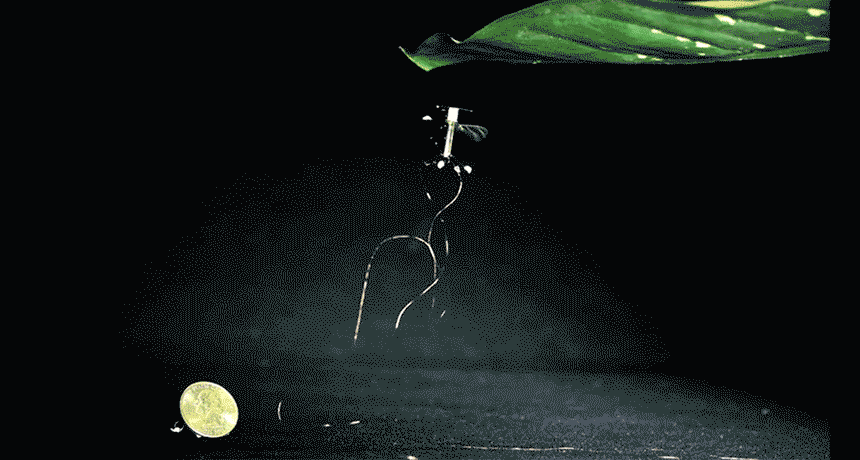Insect-sized bot is first to both fly, land
RoboBee uses static electricity to stick to surfaces

STATIC CLING A sticky electroadhesive patch lets this tiny flying RoboBee (motion slowed to one-eighth real time) cling to the underside of a leaf and use far less energy than it uses flying.
Carla Schaffer/AAAS






